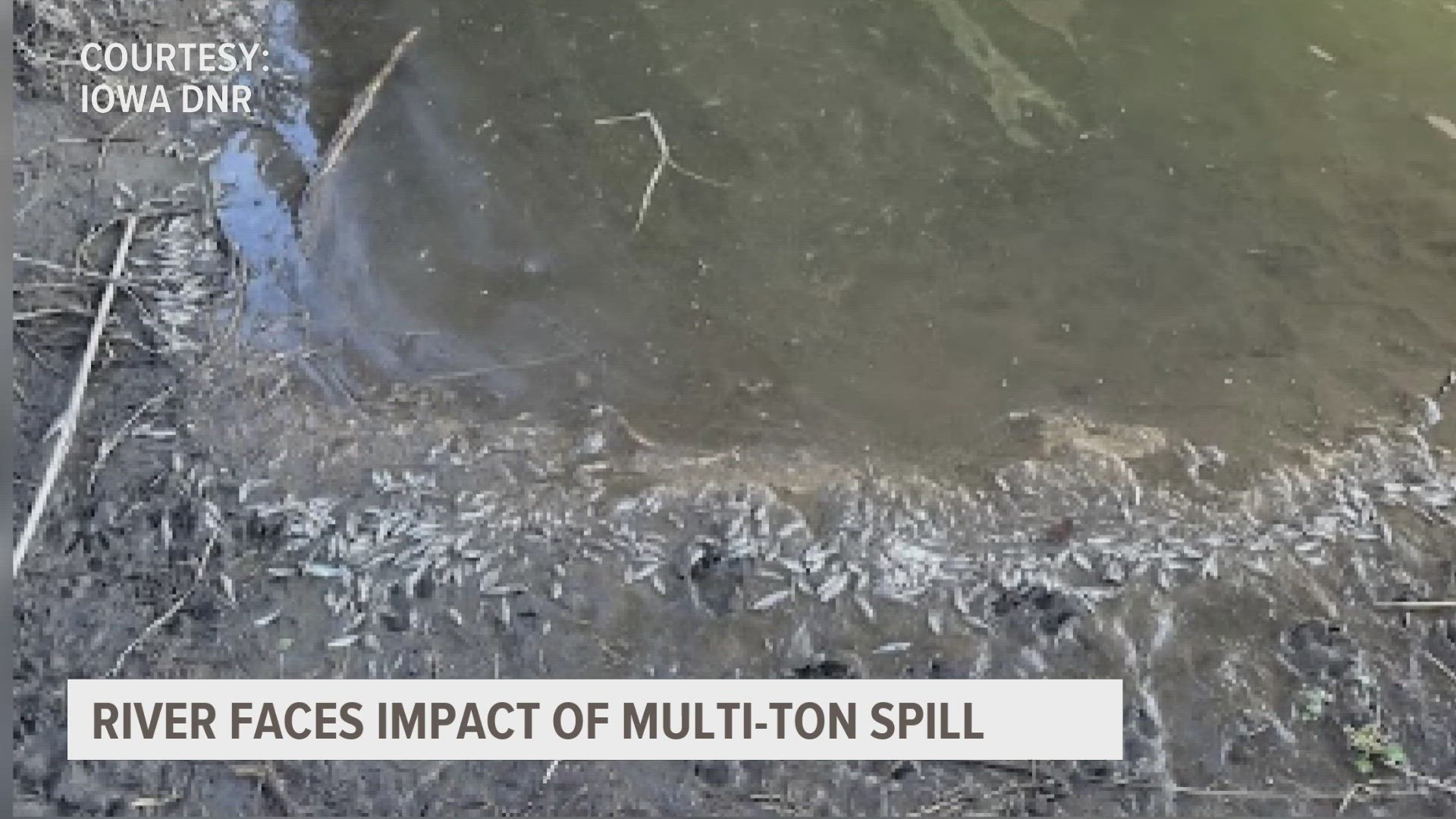MONTGOMERY COUNTY, Iowa — In March, about 1,500 tons of liquid nitrogen fertilizer spilled into the East Nishnabotna River, leaving nearly 750,000 fish dead. That accounts for nearly all the fish in an almost 50-mile stretch of the river.
This was caused by a valve left open at the NEW Cooperative Inc. Red Oak Site, according to the Iowa Department of Natural Resources.
It’s an event that a former University of Iowa research engineer is calling "catastrophic".
On March 11, about 265,000 gallons of liquid nitrogen fertilizer poured into a drainage ditch, finding its way into the East Nishnabotna River over a span of eight hours.
Retired Hydroscience Research Engineer Chris Jones says it was a huge spill for such a short window of time.
“The material was being discharged at the rate of about 32,000 gallons per hour," Jones said. "And so [for reference] my kitchen tap runs at about one gallon per minute, or about 60 gallons per hour."
According to a DNR database that goes back to the 1980s, this spill is one of the top five fish kills in Iowa’s recorded history.
“It’s a poison to the fish and other aquatic organisms, but also, as it decomposes, it consumes oxygen in the water," Jones said.
It's worsened an already troubled river.
“It’s suffered from pollution for many decades and from alterations of its hydrology," Jones said.
He added that the less water a stream has, the worse impact toxins have. With the drought, he said the river has 90% less water than usual for this time of year.
Still, due to the shear magnitude of this spill, it's possible that it would've devastated the stream regardless of its water volume, according to Jones.
He hopes to see the Iowa Department of Natural Resources give more of an explanation in terms of the how and why behind the spill. Jones pointed to the multiple fertilizer retailers across the state, emphasizing the importance of prevention.
"We want to make sure something like this doesn't happen again and, to do that, we need to how and why this happened," he said.
Jones believes fish from the Missouri River will repopulate the East Nishnabotna River, but that’s a process that can take a while.
Iowa DNR has stated that they are investigating the impact on other aquatic life as well. Cleanup efforts are ongoing.
Local 5 has reached out to the Iowa Department of Natural Resources for an interview but they are currently not commenting due to anticipated litigation.

